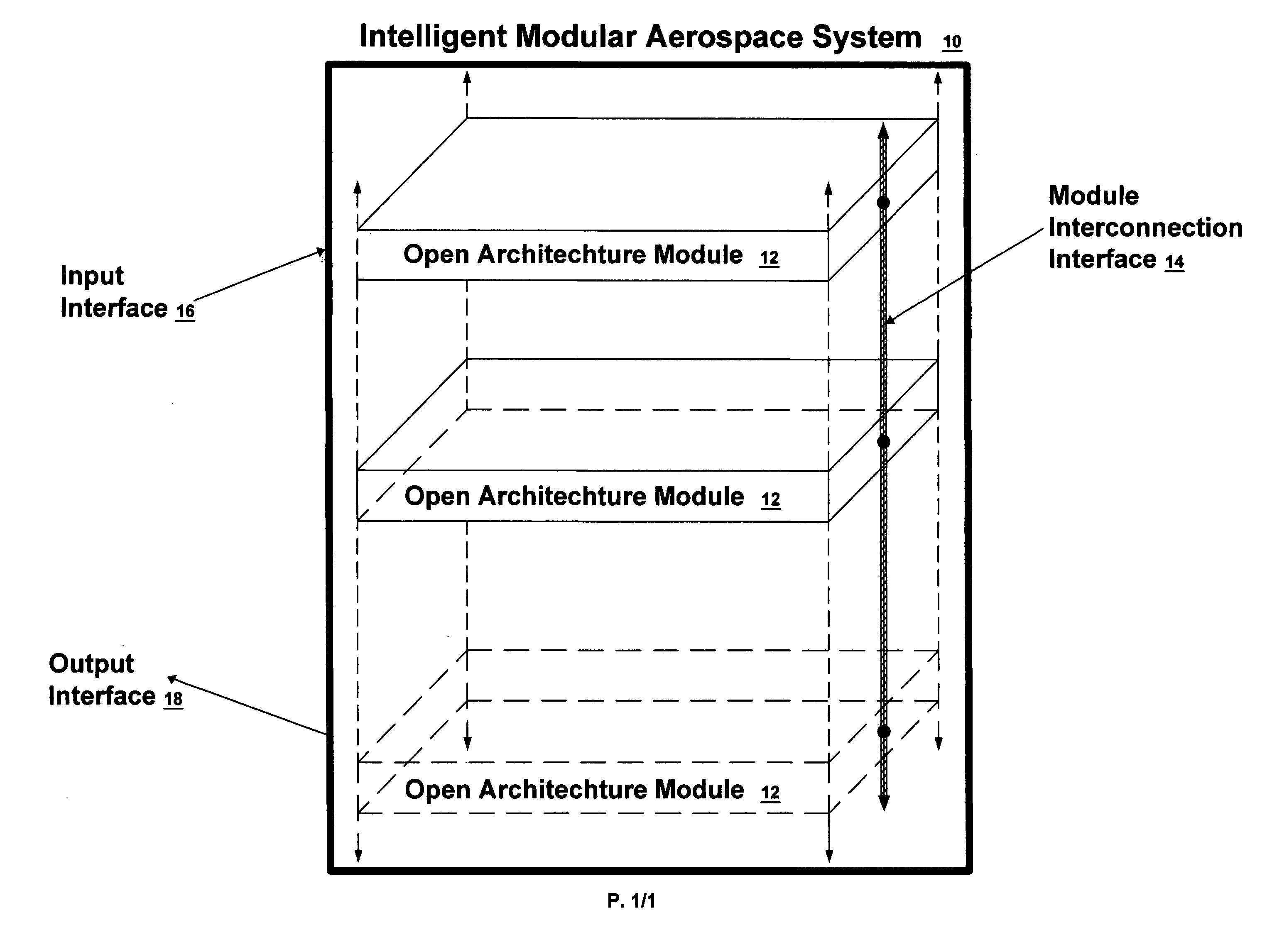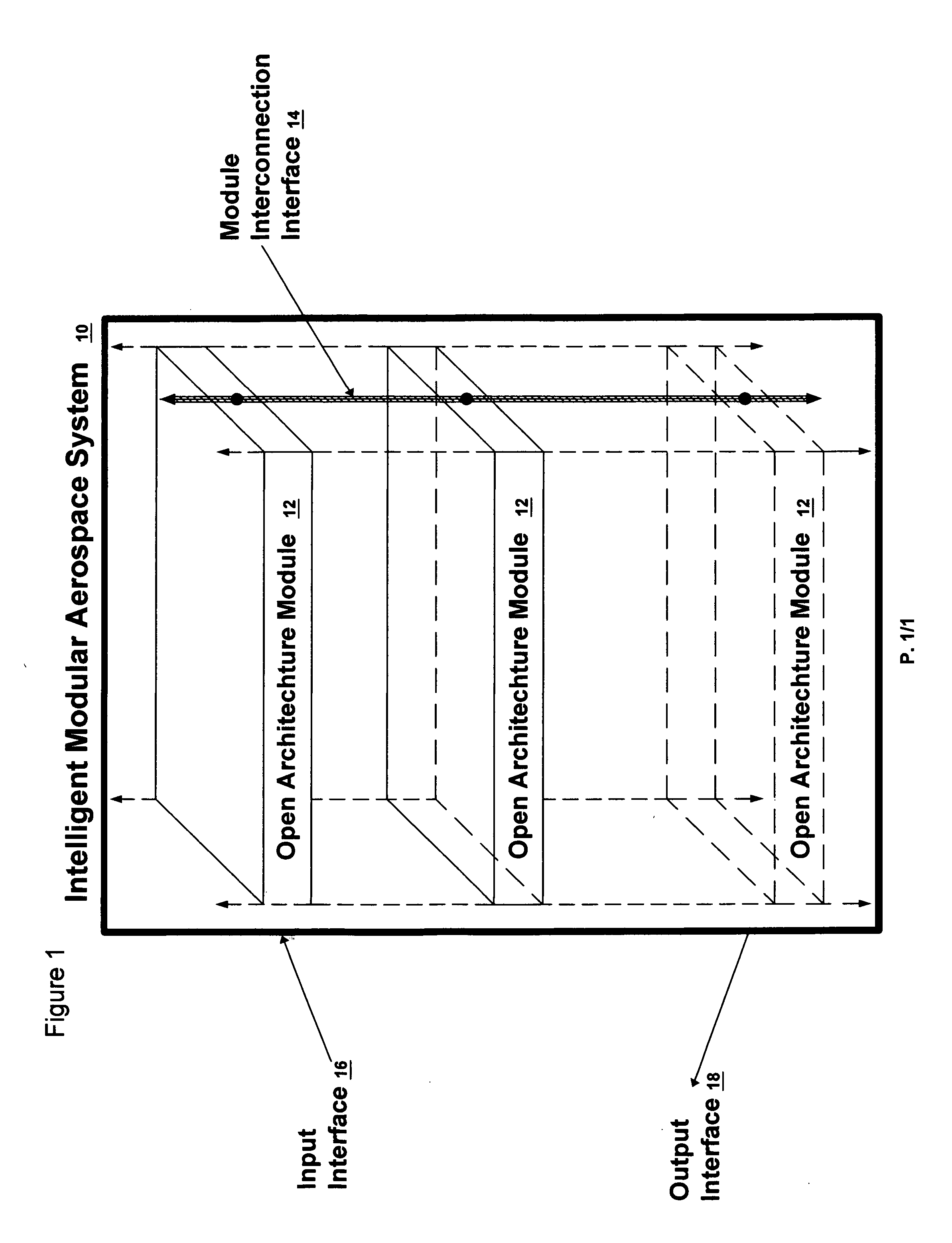The downside of this antiquated approach is that when a vehicle using such a fractionated suite of
aerospace hardware requires an incremental or full
upgrade to a particular TSPI, DA / P / R, avionics, navigation, command and data handling or PG / D
system, it often requires years and a vast amount of funding to make the changes desired to adapt that TSPI, DA / P / R, avionics, navigation, command and data handling or PG / D hardware suite aboard that particular vehicle to its new and changing requirements.
The many black-boxes comprising each single TSPI, DA / P / R, avionics, navigation, command and data handling or PG / D capability forces a customer into the extremely high cost of redeveloping and environmentally qualifying each of the many separate black-boxes which are part of the individual TSPI, DA / P / R, avionics, navigation, command and data handling or PG / D system, consistently resulting in an unnecessary and extremely large cost for an even incremental or minimal
upgrade.
There are however a very limited number of inventions addressing modular battery packs and modular
control electronics for batteries.
(a) Existing black-box systems do not incorporate methodology for isolating / combining / reconfiguring internal components either physically or via
software command in the event that mission requirements change real-time, or if a black-box component has an internal failure.
(b) It is not possible to automatically protect any system component from a damaging source, either intended or unintended, which could cause irreversible harm to the integrated system.
(c) There is no system or method specified therein which is available to provide real-time monitoring / feedback on the health status of the contents of all components within their integrated configuration.
(d) The limiting design of existing systems precludes the rapid integration of external sensors or other sources desired to augment internal components or complete functions contained within a fractionalized black-box configuration.
(e) No capability exists for real-
time data gathering from within integrated system subsets comprising a capability synthesized by the interaction of two or more components or modules within a wholly defined configuration.
(f) In addition to inefficiency problems that accompany the limiting factors encountered in fielding today's black-boxes, their ‘antiquated upon delivery’ nature also suffers from significant operations and maintenance issues and costs required to recondition and service components within the black-boxes.
(g) The closed and proprietary nature of today's black-box system long-
lead time architecture is firmly based upon obsolete technology by its very nature, and is often size, weight and power (SWAP) excessive when compared to the rapidly evolving technologies which cannot be integrated and consolidated without major redesign and large cost.
(h) Present black-box configurations are limited to their individual unique manufactured unit, and do not allow for their rapid reconfiguration to a larger / smaller capacity, either physically or electronically.
(i) All present
aerospace systems being black-box designs negate the possibility of their configuration into a modular “Lego”
type system, either in a physical or electrical arrangement, thus increasing their design, implementation and qualification costs.
(j) Extreme launch environments cause present multiple black-box systems to undergo costly individualized pre-
qualification testing to mitigate potential problems from surfacing in the operational employment of the fully fractionalized system.
(k) Present black-box architectures do not allow for a larger method of control aside from the immediate systems they are employed within, thus eliminating the possibility of mesh
network control and redundant fail-over switching.
(l) Currently deployed black-boxes are incapable of providing real-time monitoring of health and status, thus precluding the capability to head-off and work-around an internal failure before it happens.
(m) Black-boxes as currently arranged in
aerospace systems are not capable of being quickly combined with other
system hardware in real-time in the event of a change in mission rules or a change in external interfaces.
(o) Space rated environmental
qualification testing is complex and plagues all multiple black-box designs, forcing the designer into expensive qualification re-testing programs that have major schedule and cost impacts even if a tiny component and / or subsystem within a black-box is removed, changed or modified.
(p) Today's black-box combination systems cannot accommodate the capability for predictive performance in accordance with the number of cycles they have been subject to due to unique first-time combinations.
(q) Impacts of size and weight constantly arise during employment of existing multiple black-box systems, often resulting in the sacrifice of other mission capabilities.
(r) Query, reset, work-around, initializing, conditioning or reconfiguring is not possible within the confines of any of these prior art inventions, nor is it available at all within the industry.
Without the consolidation of multiple
black box systems to bring a significant
cost savings in development, aerospace environmental qualification, operation and maintenance for the life cycle of the technology application, then GPS tracking, autonomous flight and termination systems, space based range, avionics, navigation, nano /
micro satellites, command and data handling, sensor
data acquisition systems,
telemetry, targeting and guidance systems for multiple aerospace platforms will not be practical and / or feasible utilizing the existing multiple
black box architecture approach.
 Login to View More
Login to View More  Login to View More
Login to View More 

